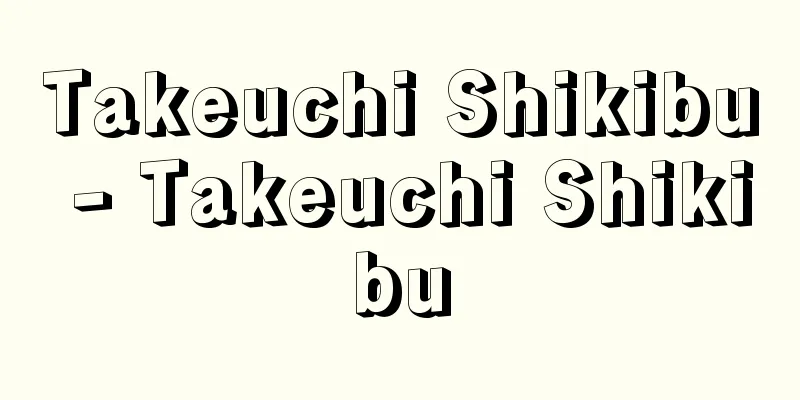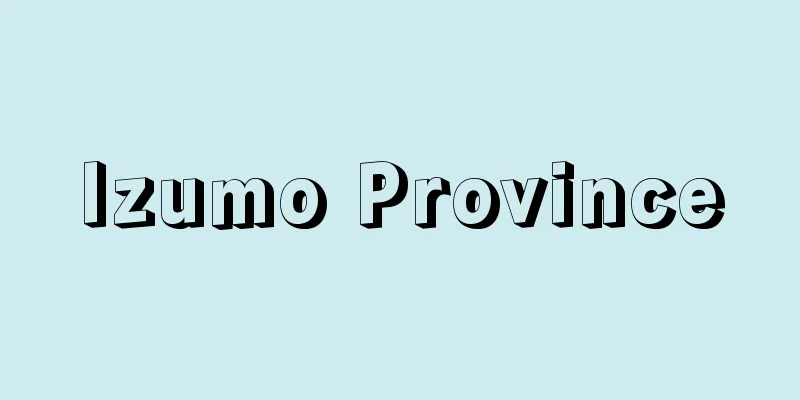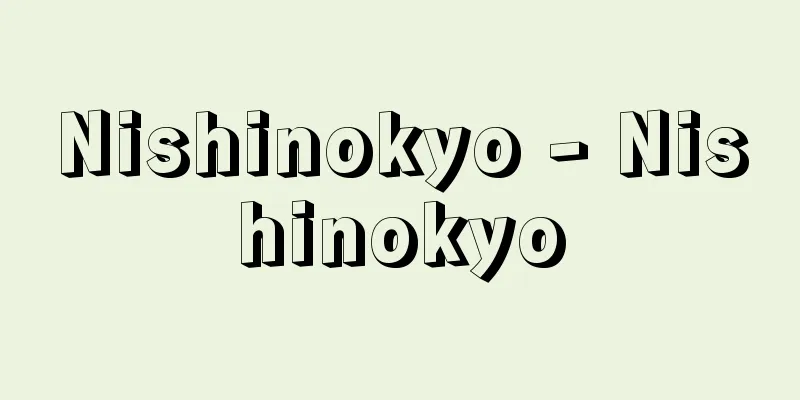Takeuchi Shikibu - Takeuchi Shikibu

|
A Confucian scholar and Shintoist in the mid-Edo period. His given name was Keiji, and he was commonly known as Shikibu. His pen name was Shusai (Shuan is a misinterpretation), later he was called Shoan (his ancestors' name) or Shusai. He was born in 1712 in Niigata, Echigo Province, as the son of Takeuchi Sosen. His family had been town doctors for generations. He went to Kyoto in 1728 or 1729 (the 13th and 14th years of the Kyoho era) and served the Tokudaiji family. He studied Confucianism under Matsuoka Churyo (1701-1783) and Sawada Issai (1701-1782), and later studied Suika Shinto under Tamaki Isai (1671-1736). He also became a disciple of Wakabayashi Kyosai in his final years. The school he opened in Kyoto had as its students 700 to 800 Tosho and Jige members, including the former head of the school, Tokudaiji Kimiki (1729-1782), and Koga Toshimichi (1735-1756). Shikibu's lectures on Confucian and Shinto scriptures had a great influence on young nobles who were dissatisfied with the status quo. In particular, when Shikibu's lecture on the Jindai chapter of the Nihon Shoki was presented to the young Emperor Momozono through a court noble who was a close attendant to the Emperor, former regent Ichijo Michika (1722-1769) became concerned and punished the nobles in 1758 (Horeki 8) (Horeki Incident), while also informing the shoshidai Matsudaira Terutaka (1725-1781) of the situation, and had Shikibu exiled in May of the following year, 1759. Then, in 1767 (Meiwa 4), the Meiwa Incident occurred, and Takeuchi Shikibu was exiled, even though she was found to have had nothing to do with it. She was exiled to Hachijo Island, where she died of an illness on December 5 of the same year on Miyake Island. [Tadao Yamada June 20, 2016] "A Study of the Achievements of Takeuchi Shikibu" by Hoshino Tsune (1899, Tomiyama Publishing; included in Echigo-Sakai Series 6, 1934, Tomiyama Publishing; 1974, Nojima Publishing)" "A History of the Japanese Nation in Early Modern Times 22: The Horeki and Meiwa Eras" by Tokutomi Ichiro (1926, Minyusha) " "Takeuchi Shikibu Sensei" by Fujita Fukutaro (1936, Niigata City Education Association) [References] | | | |Source: Shogakukan Encyclopedia Nipponica About Encyclopedia Nipponica Information | Legend |
|
江戸中期の儒者、神道(しんとう)家。名は敬持、通称は式部。号は羞斎(しゅうさい)(羞庵は誤伝)、のち正庵(父祖代々の名)または周斎。正徳(しょうとく)2年越後(えちご)国新潟に竹内宗詮の子に生まれる。生家は代々の町医者。1728、1729年(享保13、14)ごろ上洛(じょうらく)し、徳大寺家に仕え、儒学を松岡仲良(まつおかちゅうりょう)(1701―1783)、沢田一斎(さわだいっさい)(1701―1782)に学び、のち玉木葦斎(たまきいさい)(1671―1736)について垂加(すいか)神道を学び、さらに若林強斎(わかばやしきょうさい)の最晩年の弟子となった。京都に開いた塾の門下には旧主徳大寺公城(とくだいじきみき)(1729―1782)、久我敏通(こがとしみち)(1735―1756)をはじめ700~800人の堂上(とうしょう)・地下(じげ)がおり、式部の説く儒書、神書の講義は現状に不満な少壮公卿(くぎょう)に大きな影響を及ぼした。とくに式部の『日本書紀』神代巻の講義の主張が近習(きんじゅ)の公卿を通じて若い桃園(ももぞの)天皇に進講されると、これを案じた前関白一条道香(いちじょうみちか)(1722―1769)は1758年(宝暦8)公家(くげ)らを処罰(宝暦(ほうれき)事件)する一方で、所司代松平輝高(1725―1781)に事態を伝えて、翌1759年5月、式部を追放に処せしめた。ついで1767年(明和4)明和(めいわ)事件が起こると、竹内式部はこれに関係なしとされながらも遠島に処せられ、八丈(はちじょう)島へ流される途次、同年12月5日三宅(みやけ)島で病死した。 [山田忠雄 2016年6月20日] 『星野恒著『竹内式部君事蹟考』(1899・冨山房/『越佐叢書6』所収・1934・同叢書刊行会/1974・野島出版)』▽『徳富猪一郎著『近世日本国民史22 宝暦明和篇』(1926・民友社)』▽『藤田福太郎著『竹内式部先生』(1936・新潟市教育会)』 [参照項目] | | | |出典 小学館 日本大百科全書(ニッポニカ)日本大百科全書(ニッポニカ)について 情報 | 凡例 |
<<: Tsuna Takeuchi - Tsuna Takeuchi
>>: Takeuchi Highway - Takenouchi Highway
Recommend
Jasminum officinale (English spelling)
…[Murata Gen]. … *Some of the terminology that me...
Platanthera ophrydioides (English name) Platantheraophrydioides
...Kabuki actors (first to third generations), Ka...
Mihai Viteazul (English spelling)
1558‐1601 Prince of Wallachia (reigned 1593-1601),...
Drawing frame
A type of spinning machine. It breaks down the fib...
Carambolon [Cape] - Carambolon
…Population: 114,000 (1980). Facing the Indian Oc...
Daifuku mochi - Daifuku mochi
A type of mochi sweet. It is made by wrapping bea...
Niikawa
A post town on the Nakasendo road. Located at the ...
Unkokuan - Unkokuan
...He is presumed to have left Shokoku-ji Temple ...
Vascular cambium - Vascular cambium
…the meristem involved in the growth of stems and...
Good Faction - Zenpa
A school of Buddhist sculptors who were active in ...
Electronium
...In the 1950s, the development of electronic mu...
Nuclear phase - concealment
The number of chromosomes in the nucleus of a livi...
Canal Construction
… [Changes in the theory of the Industrial Revolu...
Goniatite (English spelling)
Among the extinct cephalopods, the subclass Ammoni...
Tree-kangaroo (English spelling)
A general term for animals in the genus Dendrolag...









